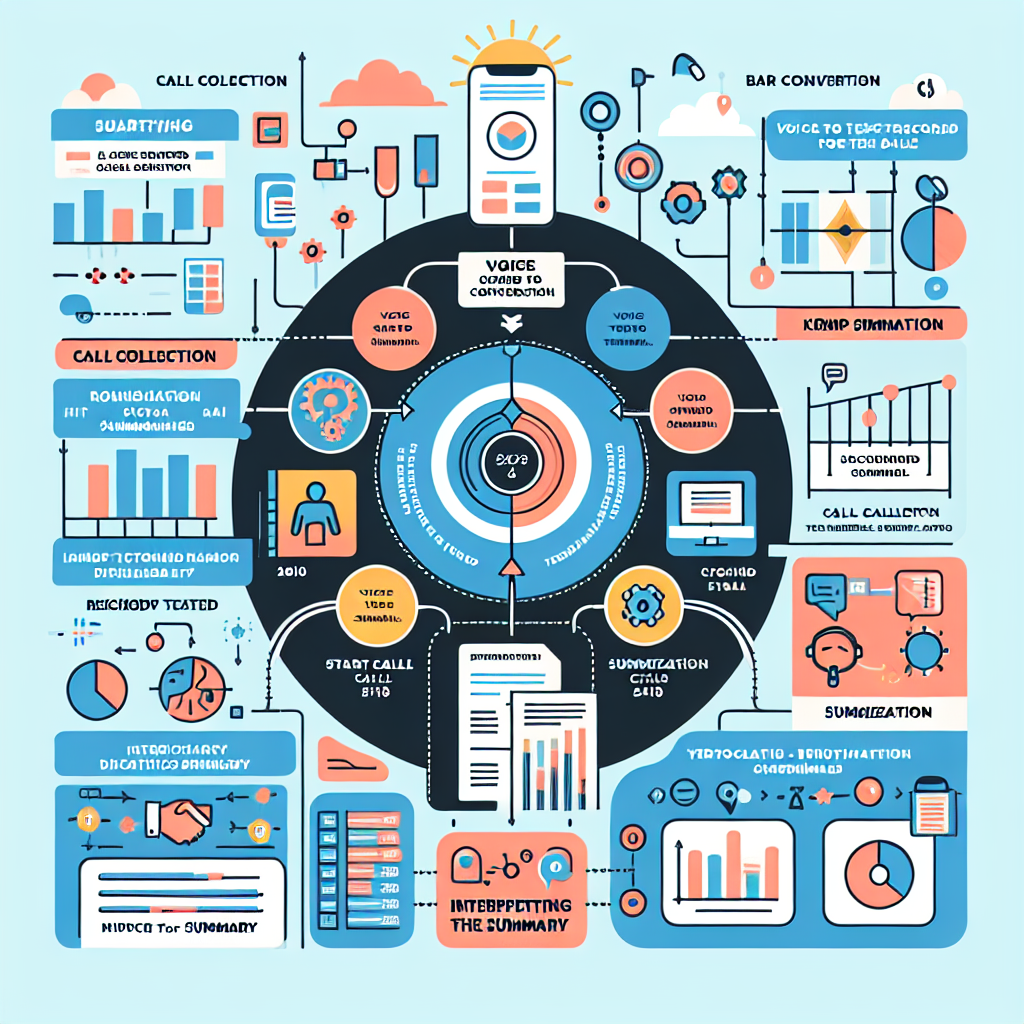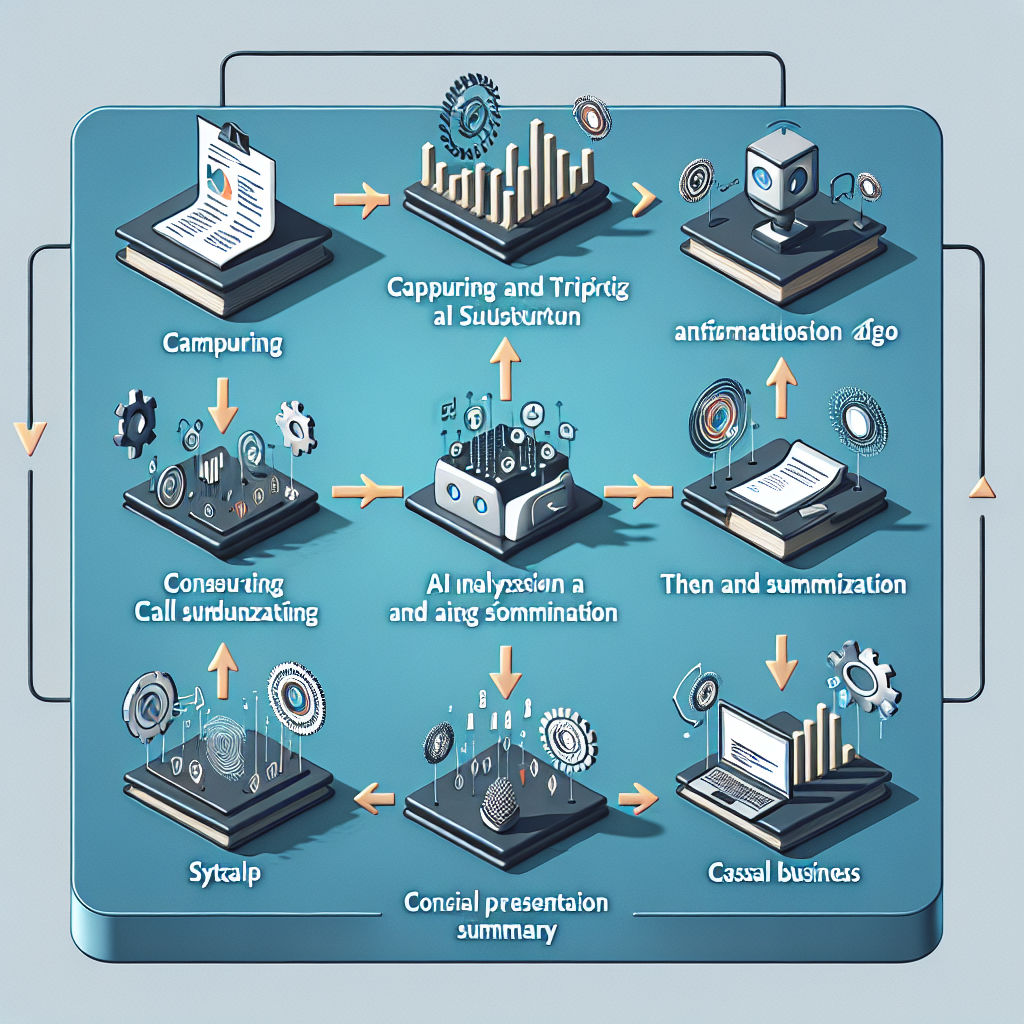
In the digital age, where every business interaction produces valuable data, managers often find themselves awash in a sea of unstructured information. One of those troves of untapped knowledge lies in customer service calls. Sifting through hours of conversation to extract insights can be time-consuming, hindering productivity and decision-making. This is where Automated Call Summarization comes into play, an AI-driven technology that serves as a transformative solution for businesses dealing with voluminous call data.

A tech-savvy amalgamation of Artificial Intelligence and Natural Language Processing (NLP), Automated Call Summarization leverages machine learning algorithms to turn raw call data into readable, concise summaries. It meticulously listens in on each interaction, processes the information, identifies relevant points, and finally provides a clear, distilled summary of every call. This NLP technology skillfully identifies key phrases, customer sentiments, complaints, and valuable feedback, thus cutting through the noise and offering a fine-tuned report for management review.
Furthermore, automated call summarization not only caters to the structuring of raw data but also ensures efficient utilization of time by filtering out irrelevant chatter. It brings essential takeaways from the conversations to the forefront, enabling managers to make informed decisions swiftly. By rapidly streamlining vast data sets, call summarization offers a panoramic view of customer interactions, aiding in crafting personalized customer experiences and optimal operational strategies. A valuable tool like Watson Natural Language Understanding can significantly ease the process and enhance the outcomes.
The advent of Automated Call Summarization is a remarkable milestone in the field of communication. Such technology utilises Artificial Intelligence (AI) to generate summaries of lengthy or complex phone calls, making it a highly valuable tool for management. However, many may wonder how AI actually powers this innovative system. To demystify this intricacy, it's important to recognise the two key technologies operating behind the scenes: Natural Language Processing (NLP) and Machine Learning (ML) models.
Natural Language Processing, or NLP, is an integral part of AI that enables it to understand human speech. It's this module that comprehends and transcribes the spoken words into written text during a phone call. Essentially, NLP lays the groundwork for the subsequent stage, which involves machine learning.
The Machine Learning part, often realized through Deep Learning models, then steps into action. These ML models analyze the transcriptions provided by the NLP, learning to identify key segments of conversation and important details. Over time, the model learns and improves its ability to extract relevant highlights, and it does so by analyzing hundreds, if not thousands, of call records. This iterative learning process powers the summarization system and results in the generation of concise call summaries.
Thus, Automated Call Summarization is a synergistic melding of Natural Language Processing and Machine Learning technologies. While the former helps AI to fathom human speech, the latter teaches it to recognize and retain important call details. In unison, these two technologies create a robust system that can accurately summarize calls, thereby unburdening management from the often laborious task of sifting through lengthy discussions, and crafting their own summaries.
Artificial Intelligence (AI) is continuously transforming the way businesses operate and manage their day-to-day communication. Notably, one of the latest trends is the use of AI-generated summaries for automating call summarization. Here is a look at the key features of these powerful tools.

The first significant capability of AI summarization tools is Sentiment Analysis. This feature leverages AI to understand and measure the emotion, tone, and context of conversations. Call data is inspected for positive, neutral, or negative sentiment, offering a complete overview of customer reactions.
Another feature that sets AI-based summarization tools apart is Key Phrase Extraction. This feature allows for the extraction of significant phrases and expressions from call data – helping management to quickly identify noteworthy topics or issues of concern.
The third pivotal function is Anomaly Detection in communication. This feature flags unusual or out-of-the-ordinary patterns in call data, such as a sudden spike in customer complaints. By doing so, it assists organizations in proactively resolving potential problems before they escalate.
In conclusion, these three core functionalities – Sentiment Analysis, Key Phrase Extraction, and Anomaly Detection – are critical elements that make AI-driven call summarization a game-changer for business communication management. By cleverly crunching call data, these tools provide management with an insightful summary that helps to streamline decision-making processes.
Automated Call Summarization has emerged as a revolutionary tool in business management, conferring a multitude of benefits to managers everywhere. Leveraging Artificial Intelligence, this system condenses lengthy call recordings into brief yet comprehensive reports, something that was unthinkable a few years back. The advent of AI-powered call summarization presents great opportunities for efficient management by simplifying routine tasks and enabling strategic decision-making.
Time Efficiency is the most significant advantage of automated call summarization. Managers often invest invaluable hours in reviewing call logs to gain a superficial understanding of customer interactions. This process, however, is prone to human error and inaccuracy. The advent of automated call summarization tools eliminate this manual effort, freeing up managers to focus more on strategic roles.
Another noteworthy benefit is the Enhanced Accuracy of Reporting. Contrary to human-generated summaries susceptible to bias and errors, AI-powered systems generate unbiased and precise summaries. These automatic summarization tools can handle any volume of calls, ensuring the same level of accuracy and consistency, thus delivering more credible and reliable reports.
Lastly, automated call summarization contributes to effective Strategic Decision Support. By delivering condensed versions of customer interactions, these tools provide a higher level of understanding about customer behavior trends, their needs and preferences. This in-depth insight aids managers in making strategic decisions. It fosters customer-centric strategies, helping businesses to thrive in a fiercely competitive market environment.
In conclusion, automated call summarization presents immense value to management by saving time, enhancing reporting accuracy, and supporting strategic decision-making, thus shaping a more efficient and effective business environment. As the AI domain continues to innovate, we can only expect automated call summarization to become an integral part of modern business strategy.
The integration of AI-powered call summarization tools into the existing business infrastructure poses a unique set of challenges. It requires a comprehensive understanding of both the technology and its application in corporate settings. However, the rewards far outweigh the difficulties, with organizations standing to significantly enhance their operational efficiency and customer service experience.

Firstly, it's crucial to conduct a thorough analysis of the existing system architecture and workflows. This critical assessment establishes the capacity for adaptability and scalability. Additionally, it outlines the system integration requirements, thereby providing an accurate roadmap for the implementation process.
When choosing an AI-powered call summarization solution, the focus should predominantly be on its accuracy and real-time functionality. Inaccuracy can lead to misunderstandings and improper data utilization, which can have massive repercussions on decision-making processes.
Candidates for implementation should pass rigorous testing phases with varying call types and conditions. The AI must show high levels of textual understanding and contextual inference, essential characteristics for creating useful call summaries.
Another potential challenge resides in the area of data privacy. The nature of these tools having access to entire call data can raise privacy concerns. These need to be addressed via GDPR-compliant tools and rigorous security measures. Precautions in data management, anonymizing personal information, and other similar practices can mitigate privacy-related risks.
Ultimately, the integration of AI-powered summarization tools can provide countless benefits to an organization, enhancing comprehension of customer interactions and facilitating more informed decision-making. Following these steps, companies can seamlessly incorporate these advancements into their infrastructure with minimal disruption.
When it comes to real-world implementation of Automated Call Summarization, also known as AI-Generated Reports for Management, several businesses and organizations have got great success stories. Through this technological leap, they managed to transform their operations, enhance customer experiences and improve their bottom line.
One such successful company is Airtel, India's leading telecommunications company. They introduced AI-driven call summarization to effectively manage the substantial volume of their customer calls and queries. Utilizing Natural Language Processing (NLP) and Deep Learning techniques, Airtel was able to generate concise summaries of customer feedback, enabling their team to quickly address issues and improve their services. By streamlining their call center operations, Airtel significantly improved customer satisfaction rates, proving that AI-Generated Reports for Management can drive tangible business outcomes.
Another remarkable success story comes from Home Depot, the largest home improvement retailer in the U.S. They implemented Automated Call Summarization into their customer service operations and changed the way they interacted with their customer calls. By analyzing and summarizing the abundant customer call data, they were able to identify trends, interpret customer sentiment, and anticipate the needs of customers more accurately. They then utilized this information to train their customer service representatives and improve their products and services. The results? A noticeable rise in customer retention and an increase in positive customer reviews.
These success stories of Airtel and Home Depot highlight how Automated Call Summarization is transforming customer service management. They also echo how AI technology can help companies leverage their data effectively, streamline operations, save time, and ultimately enhance business growth.
Start your free trial for My AI Front Desk today, it takes minutes to setup!








